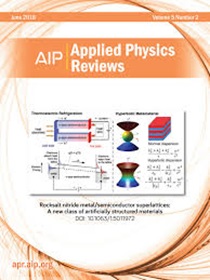Antimicrobial high-entropy alloys as a new player against microbiologically influenced corrosion: Recent advances and comparison with steels and other conventional alloys
IF 11.6
1区 物理与天体物理
Q1 PHYSICS, APPLIED
引用次数: 0
Abstract
Microbiologically influenced corrosion (MIC) is increasingly recognized as a critical factor in materials degradation, posing a risk not only to existing infrastructure but also to a broad range of emerging and rapidly growing industries. Addressing MIC challenges across diverse environments and operational conditions requires advanced, durable, and effective materials. High-entropy alloys (HEAs) represent a compelling frontier in materials science, distinguished by their complex compositions and exceptional properties, which arise from unique microstructures, the atomic arrangement of multiple principal elements, and the synergistic effects of their combinations. Many HEAs demonstrate superior corrosion resistance in comparison to conventional alloys, and their concept enables antimicrobial functionalization. From this perspective, antimicrobial HEAs emerge as promising candidates for MIC prevention and mitigation. Despite this potential, the microbiology community and corrosion industry professionals are rarely aware of HEAs, while HEA researchers, seeking new development directions and prospective applications, may not yet recognize the pressing MIC challenges and R&D needs. This review serves as a comprehensive guide for the interdisciplinary community, closing the gap between HEA research and its potential applications in corrosion protection, with emphasis on MIC. It provides a detailed overview of HEAs and conventional alloys exposed to MIC environments, evaluating their performance and exhaustively incorporating the vast majority of existing research on HEAs containing antimicrobial metals. The paper builds bridges and explores opportunities for intersectoral collaboration among applied physicists, materials scientists, corrosion experts, and microbiologists in both laboratory and industry settings.抗微生物高熵合金作为抗微生物影响腐蚀的新参与者:与钢和其他传统合金的最新进展和比较
微生物影响腐蚀(MIC)越来越被认为是材料降解的关键因素,不仅对现有基础设施构成风险,而且对广泛的新兴和快速增长的行业构成风险。应对不同环境和操作条件下的MIC挑战需要先进、耐用和有效的材料。高熵合金(HEAs)代表了材料科学的一个引人注目的前沿,以其复杂的成分和特殊的性能而著称,这些特性源于独特的微观结构,多种主要元素的原子排列以及它们组合的协同效应。与传统合金相比,许多HEAs具有优越的耐腐蚀性,并且其概念实现了抗菌功能化。从这个角度来看,抗菌HEAs是预防和缓解MIC的有希望的候选者。尽管存在这种潜力,但微生物界和腐蚀行业的专业人士很少意识到HEA,而HEA研究人员正在寻求新的发展方向和前景应用,可能还没有认识到MIC面临的紧迫挑战和研发需求。这篇综述为跨学科的研究提供了全面的指导,缩小了HEA研究与其在腐蚀保护中的潜在应用之间的差距,重点是MIC。它提供了暴露在MIC环境下的HEAs和传统合金的详细概述,评估了它们的性能,并详尽地结合了含有抗菌金属的HEAs的绝大多数现有研究。本文为应用物理学家、材料科学家、腐蚀专家和微生物学家在实验室和工业环境中的跨部门合作建立了桥梁并探索了机会。
本文章由计算机程序翻译,如有差异,请以英文原文为准。
求助全文
约1分钟内获得全文
求助全文
来源期刊

Applied physics reviews
PHYSICS, APPLIED-
CiteScore
22.50
自引率
2.00%
发文量
113
审稿时长
2 months
期刊介绍:
Applied Physics Reviews (APR) is a journal featuring articles on critical topics in experimental or theoretical research in applied physics and applications of physics to other scientific and engineering branches. The publication includes two main types of articles:
Original Research: These articles report on high-quality, novel research studies that are of significant interest to the applied physics community.
Reviews: Review articles in APR can either be authoritative and comprehensive assessments of established areas of applied physics or short, timely reviews of recent advances in established fields or emerging areas of applied physics.
 求助内容:
求助内容: 应助结果提醒方式:
应助结果提醒方式:


